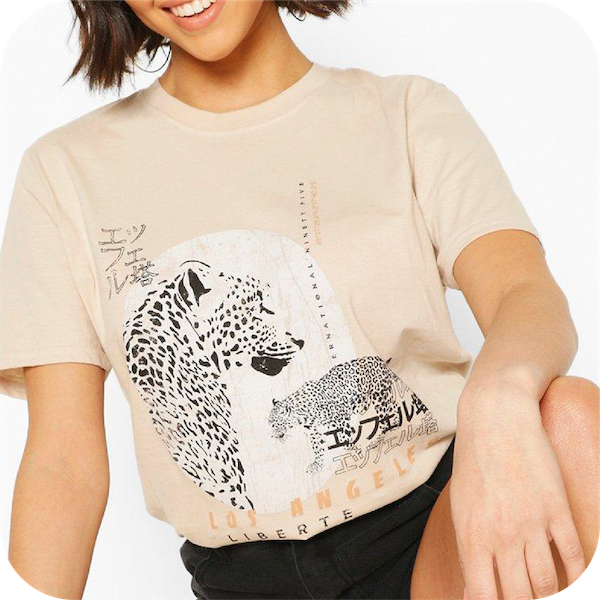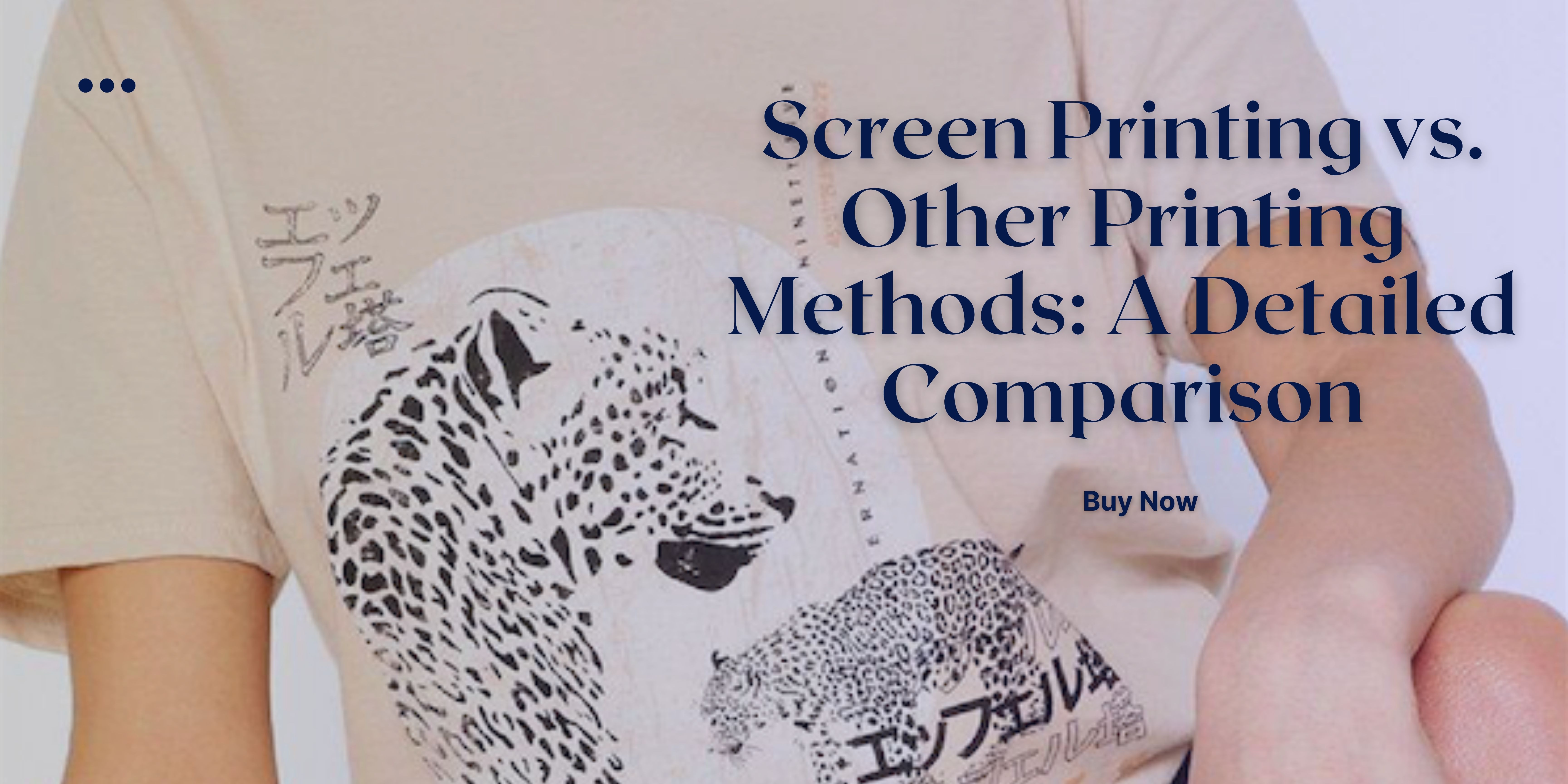With the advancement of printing technology, a variety of techniques are now available, each with specific advantages and suitable uses. Screen printing is unique due to its adaptability and robustness for items such as clothing and bags. However, what is its comparative advantage over other printing techniques, such as sublimation, offset, and digital printing? This comparison will cover the specifics of each approach in depth, assisting you in selecting the best option for your upcoming printing job.
What is Screen Printing?
This method creates a printed design on clothes for men and women by applying ink through a stencilled mesh screen. Even if you’ve never heard of screen printing before, you’ve probably worn or used an item at some point without even realising it because it’s a widely utilised method in a wide range of industries. Although the technique is sometimes referred to as silk screen printing or serigraphy, it uses the same fundamental technique.

Excellent Benefits of Screen Printing
Durability: Because screen printing inks are usually thicker than those used in other techniques, the prints produced are more resilient to heavy use and frequent washing.
Bright Colours: The technique enables the use of high-opacity inks that yield brilliant colours even on dark surfaces.
Versatility: Screen printing is effective on a variety of materials, such as glass, metal, plastic, and textiles.
Economical for Big Orders: Larger orders result in a significant reduction in the per-unit cost, notwithstanding the time-consuming and expensive setup process.
Now, Let’s Explore Other Printing Methods
You can customise your apparel, customised backpacks, and other items not only with screen printing but also with other reliable methods. To help you make a better choice, you will learn several benefits related to these methods.
Digital Printing
In this age of technology, printing options have become unlimited. Even though choices like transfers, patches, and embroidery are still often utilised, computers have made it possible to print in a new format: digital.
Digital printing transmits a picture onto a selected surface, such as a shirt, mug, hat, bag, etc. Using tiny ink droplets, digital printing is one of the most economical printing methods available because of its ease of use and low equipment requirements. It is also among the most incredible solutions for Print on Demand services because it is perfect for small quantities of products.
Advantages Of Digital Printing
Perfect for Short Runs: Digital printing is ideal for short runs and customised prints since it eliminates the requirement for set-up plates.
Excellent Detail and Quality: Generates prints with exceptional detail and smooth gradients at a high resolution.
Fast Turnaround: Production and delivery can happen more quickly when there is less setup time.
Variable data Printing makes it simple to customise each print, making it perfect for customised goods and focused marketing materials.
Comparison With Screen Printing
Expensive For Big Orders: Digital printing can be costly for large orders, even though it is cost-effective for smaller numbers.
Problems with Colour Matching: Accurate colour matching can be more complex to achieve than with conventional techniques such as screen printing.
Durability: Screen-printed goods may be more durable than digital prints, mainly when applied to textiles.
Offset Printing
In commercial printing, offset printing is a commonly used technique in which an inked image on a printing plate is transferred (or offset) to paper or another medium using a rubber cylinder. Owing to its outstanding quality, offset printing is a highly desired method in numerous industries, making it a perfect option for raising the value of different goods, packaging, and publications.

Benefits Of Offset Printing
Superior calibre and reliability: Produces prints that are crisp, detailed, and of a high calibre.
Affordable for Large Orders: It is perfect for bulk printing because the cost per unit drops dramatically with more significant numbers.
Surface Versatility: Works well on various surfaces, including cardboard, plastic, and paper.
Comparison with Screen Printing
High Initial Setup Cost: Compared to screen printing, initial setup, which includes plate creation, can be expensive and time-consuming.
Not Appropriate for Small Quantities: Offset printing is not cost-effective for small quantities because of the setup expenses.
Limited Flexibility: It can be challenging and costly to adjust once the setup starts.
Sublimation Printing
Sublimation printing is a kind of digital printing technique that transfers dye onto various materials by applying pressure and heat.
This is the Entire Process:
- Sublimation inks are used to print a design onto specialised transfer paper.
- After that, you apply the paper to the item and use a heat press to warm it.
- The material absorbs the inks once they become a gas due to the heat.
- As a consequence, you obtain an enduring, colourful print that won’t fade or chip over time.
Advantages Of Sublimation Printing
Bright and Permanent Prints: The dye fuses with the fabric or substrate to produce attractive, durable prints that are resistant to fading, peeling, and cracking.
Smooth surface: The material has a smooth surface because sublimation prints don’t add any extra layers to it.
Perfect for Detailed Pictures: It is capable of creating photographs with remarkable detail and photographic quality.
No Colour Limits: Sublimation can replicate a large variety of colours at no extra expense.
Limitations of Sublimation Printing
Material Restriction: Not recommended for use with cotton or other natural fibres; works best on coated products and polyester fabrics.
Increased Cost for Small Items: Screen printing may be more expensive for small items or low-quantity orders.
Complex Setup: For best outcomes, the procedure can be complicated and call for specific circumstances.
| Key Aspects | Screen printing | Digital Printing | Offset Printing | Sublimation Printing |
|---|---|---|---|---|
| Setup Time | Long | Short | Long | Short |
| Initial Cost | High | Low | High | Low |
| Best For | High Volume, textiles | Low to medium volume | High Volume | Custom, promotional items |
| Durability | Excellent For textiles | Good | High | Good, Varies |
| Materials | Versatile(fabrics, wood, etc) | Versatile(paper, fabrics,etc) | Primarily Paper | Versatile(fabrics,ceramics,etc) |
In Closure
Every printing technique has advantages and is best suited for particular kinds of tasks. For large runs, screen printing excels in durability and economy; for smaller projects, digital printing provides unparalleled flexibility and detail; offset printing works well for high-volume, premium paper goods; and heat transfer printing works well for personalised and promotional items.
The particular requirements of the project, such as volume, material, and required quality, will determine which approach is best. With different methods at your service, choose the one best fit for your needs. If you want to add extra charm to your clothes and bags, then customised clothing is your go-to destination.


